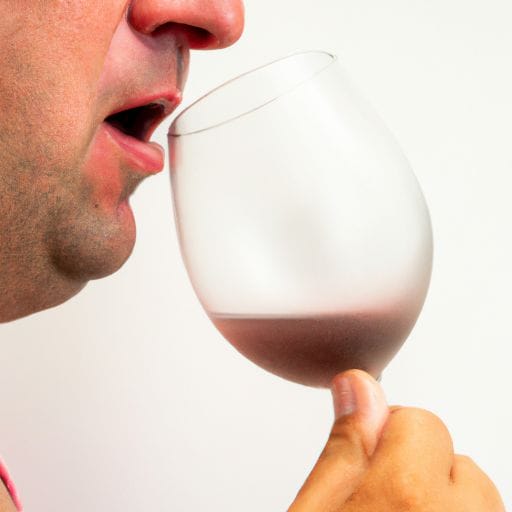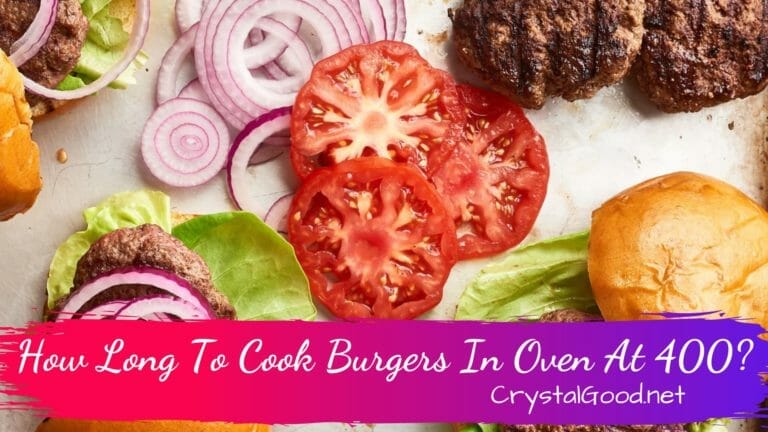Wine is a complex beverage that can be enjoyed by many. It has a wide range of flavors and aromas that can be experienced depending on the type of wine. From fruity and floral to earthy and spicy, there is something for everyone. Wine tasting is an art form that requires practice and knowledge to truly appreciate the nuances of each bottle. In this article, we will explore what does wine taste like and how to identify the different flavors and aromas. We will also discuss the different types of wine and how to pair them with food.

Exploring the Different Varieties of Wine and What They Taste Like
Contents
- 1 Exploring the Different Varieties of Wine and What They Taste Like
- 2 How to Identify the Different Aromas and Flavors of Wine
- 3 The Science Behind What Makes Wine Taste Good
- 4
- 5 How to Pair Wine with Food for the Perfect Taste Combination
- 6 The Difference Between Sweet and Dry Wines and What They Taste Like
- 7 Exploring the Different Regions of the World and the Unique Wines They Produce
- 8 The Impact of Aging on Wine and How It Affects the Taste
- 9 The Benefits of Drinking Wine and How It Enhances the Taste of Food
- 10 FAQs:
- 11 1. What does red wine taste like?
- 12 2. What does white wine taste like?
- 13 3. What does rosé wine taste like?
- 14 4. What does sparkling wine taste like?
- 15 5. What does sweet wine taste like?
- 16 6. What does dry wine taste like?
- 17 7. What does fortified wine taste like?
- 18 8. What does dessert wine taste like?
- 19 Conclusion
Wine is a beverage that has been enjoyed for centuries, and it comes in a variety of styles and flavors. Whether you’re a novice or a connoisseur, there’s a wine out there for everyone! Here’s a quick guide to some of the different varieties of wine and what they taste like.
White Wine: White wine is light and crisp, with flavors ranging from citrusy to floral. Popular varieties include Chardonnay, Sauvignon Blanc, and Riesling. Chardonnay is a full-bodied white wine with notes of apple, pear, and butter. Sauvignon Blanc is a light-bodied white wine with flavors of grapefruit, lemon, and grass. Riesling is a sweet white wine with notes of peach, apricot, and honey.
Red Wine: Red wine is bold and full-bodied, with flavors ranging from fruity to earthy. Popular varieties include Cabernet Sauvignon, Merlot, and Pinot Noir. Cabernet Sauvignon is a full-bodied red wine with notes of blackberry, cassis, and oak. Merlot is a medium-bodied red wine with flavors of plum, black cherry, and chocolate. Pinot Noir is a light-bodied red wine with notes of raspberry, cherry, and mushroom.
Sparkling Wine: Sparkling wine is light and bubbly, with flavors ranging from sweet to dry. Popular varieties include Champagne, Prosecco, and Cava. Champagne is a dry sparkling wine with notes of apple, pear, and brioche. Prosecco is a sweet sparkling wine with flavors of peach, apricot, and honey. Cava is a dry sparkling wine with notes of citrus, apple, and almond.
Rosé Wine: Rosé wine is light and fruity, with flavors ranging from sweet to dry. Popular varieties include White Zinfandel, Grenache, and Pinot Grigio. White Zinfandel is a sweet rosé wine with notes of strawberry, raspberry, and watermelon. Grenache is a dry rosé wine with flavors of cherry, plum, and spice. Pinot Grigio is a light-bodied rosé wine with notes of peach, melon, and citrus.
No matter what type of wine you’re looking for, there’s something out there for everyone! So grab a bottle and explore the wonderful world of wine!
How to Identify the Different Aromas and Flavors of Wine
Wine tasting is an art form that can be enjoyed by everyone! With a little practice, you can learn to identify the different aromas and flavors of wine. Here are some tips to help you get started:
- Start by taking a good look at the wine. Note the color, clarity, and viscosity.
- Swirl the wine in your glass and take a deep breath. What aromas do you detect? Common aromas include fruit, floral, herbal, and earthy notes.
- Take a sip and let the wine linger in your mouth. What flavors do you taste? Common flavors include sweet, sour, bitter, and salty.
- Take a few more sips and pay attention to the body and texture of the wine. Is it light or full-bodied? Is it smooth or tannic?
- Finally, take a few more sips and note the finish. Does the flavor linger or does it fade quickly?
By following these steps, you can learn to identify the different aromas and flavors of wine. With practice, you’ll be able to recognize the subtle nuances of each wine and enjoy the experience even more!
The Science Behind What Makes Wine Taste Good
Wine is a complex beverage that has been enjoyed for centuries. But what makes it taste so good? The answer lies in the science behind the flavor and aroma of wine.
First, let’s look at the flavor of wine. The flavor of wine is determined by the type of grape used, the climate in which it was grown, and the winemaking process. Grapes contain a variety of acids, sugars, and tannins that give wine its unique flavor. The climate in which the grapes are grown affects the flavor of the wine, as different climates produce different levels of acidity, sweetness, and tannins. Finally, the winemaking process can also affect the flavor of the wine. Different winemaking techniques can bring out different flavors in the wine.
Now let’s look at the aroma of wine. The aroma of wine is determined by the type of grape used, the climate in which it was grown, and the winemaking process. Grapes contain a variety of compounds that give wine its unique aroma. The climate in which the grapes are grown affects the aroma of the wine, as different climates produce different levels of compounds. Finally, the winemaking process can also affect the aroma of the wine. Different winemaking techniques can bring out different aromas in the wine.
So, what makes wine taste good? The answer lies in the science behind the flavor and aroma of wine. Grapes contain a variety of acids, sugars, and tannins that give wine its unique flavor. The climate in which the grapes are grown affects the flavor and aroma of the wine, as different climates produce different levels of compounds. Finally, the winemaking process can also affect the flavor and aroma of the wine. Different winemaking techniques can bring out different flavors and aromas in the wine. All of these factors combine to create the unique flavor and aroma of wine that we all know and love.
How to Pair Wine with Food for the Perfect Taste Combination
Pairing wine with food can be a daunting task, but it doesn’t have to be! With a few simple tips, you can create the perfect taste combination that will make your meal even more enjoyable.
First, consider the type of food you are serving. Different types of food pair better with different types of wine. For example, a light white wine such as a Sauvignon Blanc pairs well with seafood, while a full-bodied red such as a Cabernet Sauvignon pairs well with red meats.
Next, consider the flavors of the food. If the dish is spicy, a sweeter wine such as a Riesling or Gewürztraminer can help to balance out the heat. If the dish is rich and creamy, a dry white such as a Chardonnay can help to cut through the richness.
Finally, consider the texture of the food. If the dish is light and delicate, a light-bodied wine such as a Pinot Grigio can help to enhance the flavors. If the dish is hearty and robust, a full-bodied wine such as a Zinfandel can help to bring out the flavors.
With these tips in mind, you can create the perfect taste combination for your meal. So go ahead and experiment with different wines and foods to find the perfect pairing!
The Difference Between Sweet and Dry Wines and What They Taste Like
When it comes to wine, there are two main categories: sweet and dry. Sweet wines are those that have a higher sugar content, while dry wines have a lower sugar content. So, what’s the difference between the two and what do they taste like? Let’s find out!
Sweet wines are usually made from grapes that have been left on the vine longer, allowing them to become more ripe and sweet. These wines tend to have a higher alcohol content and a sweeter taste. They can range from light and fruity to rich and syrupy. Some popular sweet wines include Moscato, Riesling, and Gewürztraminer.
Dry wines, on the other hand, are made from grapes that are harvested earlier, resulting in a lower sugar content. These wines tend to have a lower alcohol content and a more tart taste. They can range from light and crisp to full-bodied and complex. Popular dry wines include Cabernet Sauvignon, Merlot, and Pinot Noir.
No matter which type of wine you prefer, there’s something for everyone. Sweet wines are great for those who enjoy a sweeter taste, while dry wines are perfect for those who prefer a more tart flavor. So, why not try both and see which one you like best? Cheers!
Exploring the Different Regions of the World and the Unique Wines They Produce
Exploring the world of wine can be an exciting and rewarding experience. From the rolling hills of Tuscany to the lush vineyards of California, each region has its own unique terroir and climate that produces a variety of wines with distinct characteristics. Whether you’re a novice or a connoisseur, there’s something for everyone to enjoy.
Let’s start in Europe, where some of the world’s most renowned wines are produced. In France, the Bordeaux region is known for its Cabernet Sauvignon and Merlot blends, while the Rhone Valley is home to Syrah and Grenache. Italy is home to some of the world’s most beloved wines, including Chianti, Barolo, and Brunello di Montalcino. Spain is known for its Tempranillo and Garnacha, while Portugal is home to the famous Port wines.
Heading to the New World, we find some of the most exciting and innovative wines. In the United States, California is the undisputed leader in wine production, with its Cabernet Sauvignon, Chardonnay, and Zinfandel. Oregon and Washington are also producing some excellent wines, particularly Pinot Noir. In South America, Argentina is known for its Malbec, while Chile is home to Carmenere and Sauvignon Blanc.
Finally, let’s not forget about the wines of Australia and New Zealand. Australia is known for its Shiraz and Chardonnay, while New Zealand is home to Sauvignon Blanc and Pinot Noir.
No matter where you go, there’s something for everyone to enjoy. So why not take a trip around the world and explore the unique wines each region has to offer? Cheers!
The Impact of Aging on Wine and How It Affects the Taste
As wine ages, its flavor and aroma can change dramatically. Aging can bring out new flavors and aromas, while also softening the tannins and acidity of the wine. This can make the wine more enjoyable to drink, as the flavors become more complex and the texture more velvety.
When it comes to aging wine, there are a few key factors to consider. The type of wine, the storage conditions, and the length of time the wine has been aged all play a role in how the wine will taste.
For example, red wines tend to benefit more from aging than white wines. This is because red wines contain more tannins and acidity, which can soften over time. White wines, on the other hand, tend to lose their freshness and become more oxidized as they age.
The storage conditions also play a role in how the wine will taste. Wines should be stored in a cool, dark place, away from direct sunlight and other sources of heat. This will help to preserve the flavor and aroma of the wine.
Finally, the length of time the wine has been aged will also affect its taste. Generally speaking, the longer a wine has been aged, the more complex and intense its flavor and aroma will be.
Aging wine can be a fun and rewarding experience. With the right storage conditions and a bit of patience, you can enjoy a bottle of wine that has been aged to perfection. So, don’t be afraid to experiment and see what aging can do for your favorite wines!
The Benefits of Drinking Wine and How It Enhances the Taste of Food
Wine is a delightful beverage that can enhance the flavor of food and provide a variety of health benefits. Not only does it add a unique flavor to meals, but it can also help to reduce stress and improve your overall health. Here are some of the benefits of drinking wine and how it can enhance the taste of food.
First, wine can help to bring out the flavor of food. The acidity of the wine helps to cut through the fat and bring out the subtle flavors of the food. This is especially true when pairing wine with cheese, as the acidity of the wine helps to bring out the flavor of the cheese. Additionally, the tannins in red wine can help to bring out the flavor of red meats, making them even more delicious.
Second, drinking wine can help to reduce stress. Studies have shown that moderate consumption of wine can help to reduce stress levels and improve overall mental health. This is because wine contains antioxidants that can help to reduce inflammation in the body, which can help to reduce stress levels.
Finally, drinking wine can provide a variety of health benefits. Studies have shown that moderate consumption of wine can help to reduce the risk of heart disease, stroke, and certain types of cancer. Additionally, wine can help to improve digestion and reduce the risk of certain types of infections.
Overall, drinking wine can be a great way to enhance the flavor of food and provide a variety of health benefits. Not only does it add a unique flavor to meals, but it can also help to reduce stress and improve your overall health. So, the next time you’re enjoying a meal, why not pour yourself a glass of wine and enjoy the benefits it has to offer?
FAQs:
1. What does red wine taste like?
Red wine can have a variety of flavors, depending on the type of grape used and the winemaking process. Generally, red wines have a fruity flavor, with notes of cherry, plum, blackberry, and raspberry. They can also have earthy, spicy, and herbal notes.
2. What does white wine taste like?
White wines can also have a variety of flavors, depending on the type of grape used and the winemaking process. Generally, white wines have a crisp, fruity flavor, with notes of citrus, apple, pear, and melon. They can also have floral, herbal, and mineral notes.
3. What does rosé wine taste like?
Rosé wines have a light, fruity flavor, with notes of strawberry, raspberry, and watermelon. They can also have floral, herbal, and mineral notes.
4. What does sparkling wine taste like?
Sparkling wines have a crisp, fruity flavor, with notes of citrus, apple, pear, and melon. They can also have floral, herbal, and mineral notes.
5. What does sweet wine taste like?
Sweet wines have a sweet, fruity flavor, with notes of honey, apricot, peach, and pineapple. They can also have floral, herbal, and mineral notes.
6. What does dry wine taste like?
Dry wines have a dry, fruity flavor, with notes of cherry, plum, blackberry, and raspberry. They can also have earthy, spicy, and herbal notes.
7. What does fortified wine taste like?
Fortified wines have a sweet, fruity flavor, with notes of honey, apricot, peach, and pineapple. They can also have floral, herbal, and mineral notes.
8. What does dessert wine taste like?
Dessert wines have a sweet, fruity flavor, with notes of honey, apricot, peach, and pineapple. They can also have floral, herbal, and mineral notes.
Conclusion
In conclusion, wine can taste like a variety of different things depending on the type of wine, the region it is from, and the winemaker’s style. Wine can range from sweet and fruity to dry and earthy, and can have notes of herbs, spices, and even chocolate. Ultimately, the best way to find out what wine tastes like is to try it for yourself.














